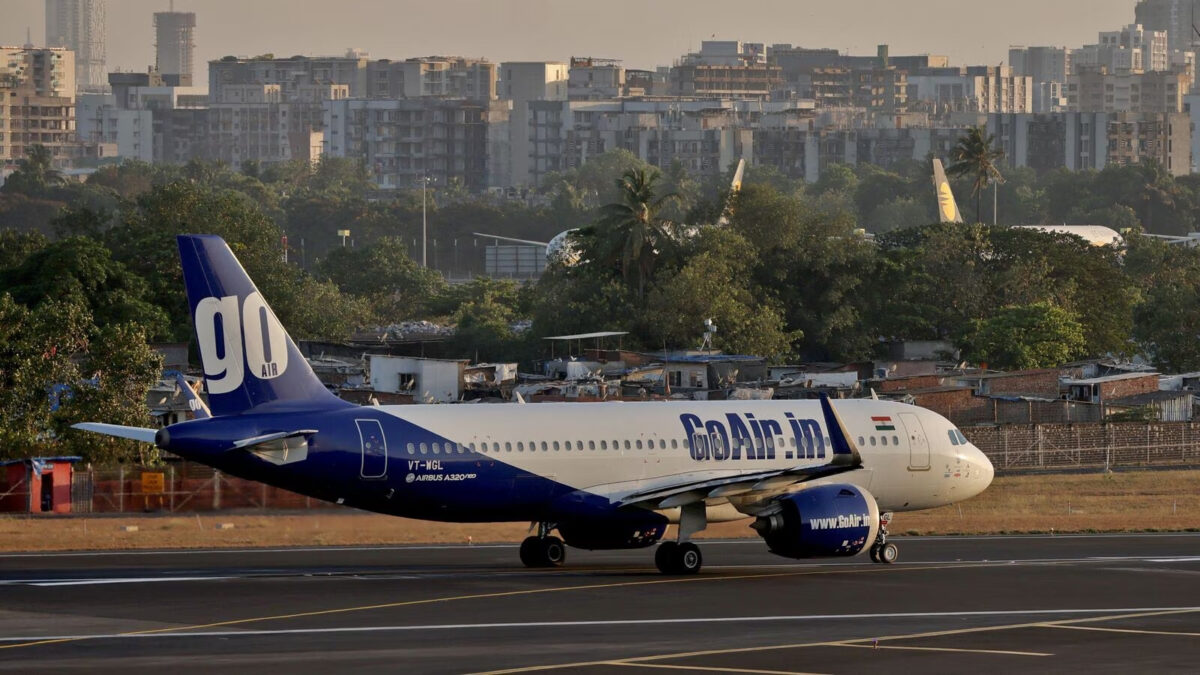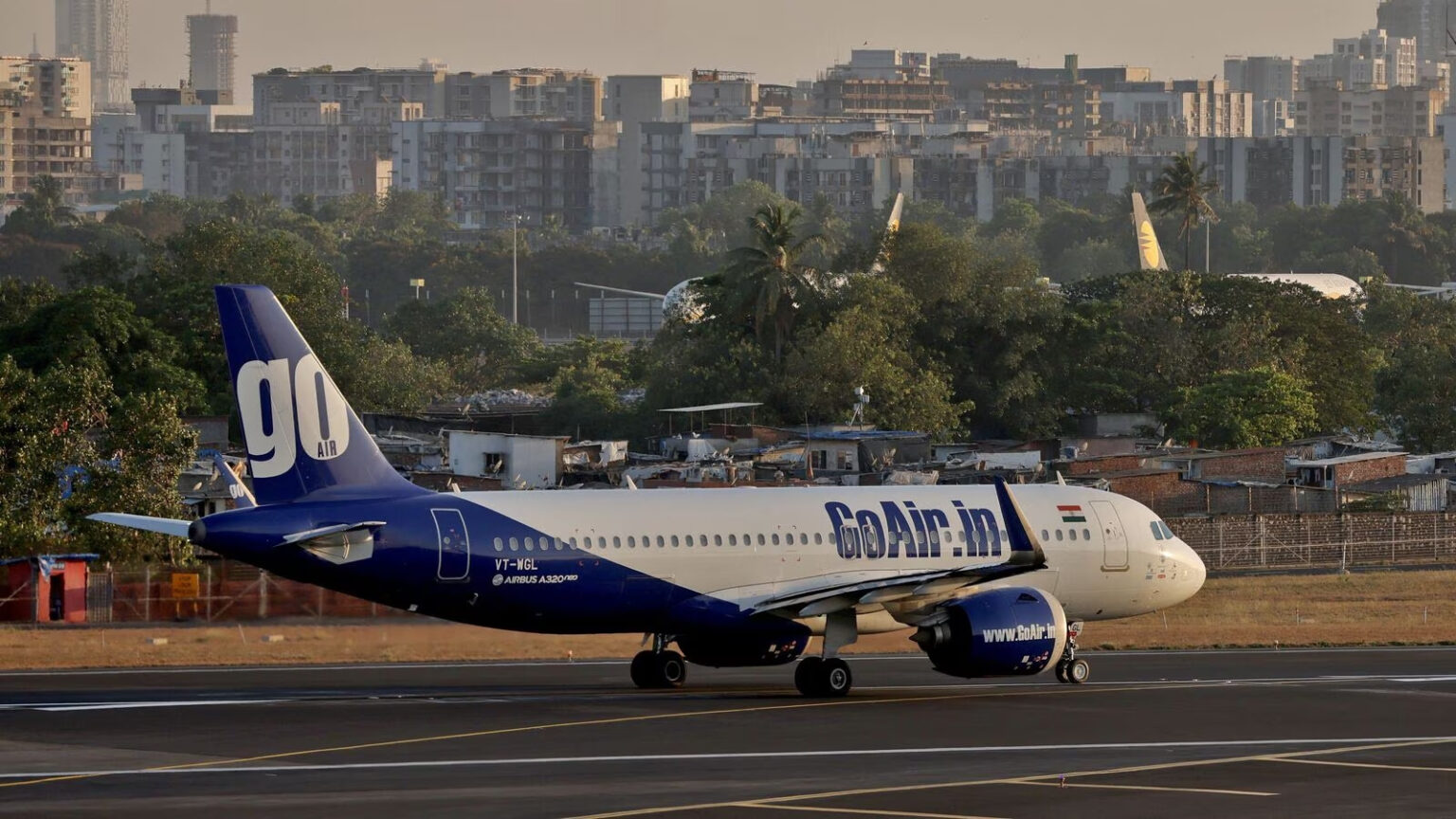Go Airlines (India) Ltd., commonly known as GoAir, has been facing financial difficulties that resulted in the company filing for bankruptcy protection in May. GoAir, a low-cost airline based in Mumbai, has been operating domestic and international flights since its establishment in 2005.
In recent years, GoAir has encountered a challenging operating environment due to intense competition within the Indian aviation industry and rising operational costs. The airline has struggled with high fuel prices, regulatory issues, and fierce competition from other low-cost carriers.

The COVID-19 pandemic further exacerbated GoAir’s financial woes. The aviation industry experienced a severe downturn as travel restrictions and reduced passenger demand significantly impacted airlines worldwide. GoAir witnessed a substantial decline in revenue and incurred significant losses during this period.
As a result of its financial struggles, GoAir faced difficulties meeting its financial obligations, including loan repayments and payments to vendors. The airline’s cash flow problems led to operational disruptions and ultimately forced the company to declare bankruptcy.
In June 2020, GoAir initiated a major restructuring process in an attempt to revive its operations and manage its debts. The company implemented significant cost-cutting measures, including employee layoffs, fleet reduction, and route optimization. However, despite these efforts, the financial situation remained critical.
In December 2020, a consortium of creditors, including banks and aircraft lessors, initiated insolvency proceedings against GoAir. The case was admitted by the National Company Law Tribunal (NCLT), which initiated a resolution process to recover outstanding debts and find a potential buyer for the airline.
The bankruptcy and subsequent resolution process dealt a significant blow to GoAir, resulting in severe disruptions to its operations and diminished market presence. The outcome of the resolution process will determine the future of GoAir and whether the airline can emerge from bankruptcy and resume its operations.
However, there is hope for GoAir’s revival. The airline aims to resume daily flights shortly, with plans to restore 94% of its previous daily flight capacity. GoAir has submitted a revival plan to the aviation regulator, proposing 157 daily domestic flights, slightly fewer than the 167 it operated before. The plan is currently awaiting approval from the regulator, which is expected to be granted soon. If approved, GoAir could resume flights within the next two weeks.
In addition to regulatory approval, GoAir is also awaiting creditor approval for additional funding. The exact amount of investment needed has not been specified. Securing additional funding is crucial for the airline’s revival and to address its financial obligations.
Despite the challenging circumstances, GoAir remains a significant player in the Indian aviation market. Formerly known as Go First, the airline currently holds a 6.4% market share in one of the world’s fastest-growing aviation markets. As part of its revival plan, GoAir intends to operate 22 aircraft and allocate four additional jets for future requirements.
However, the engine troubles experienced by GoAir have been a major setback. The airline has faced issues with Pratt & Whitney engines, leading to premature failures and shutdowns. As a result, half of its Airbus A320neo fleet has been grounded. GoAir is seeking $1.1 billion in compensation from Pratt through US arbitration and aims to have outstanding orders for 144 engines fulfilled.
Pratt & Whitney, on its part, has stated its commitment to meeting delivery schedules and complying with an arbitration court’s directive to supply parts to GoAir. However, the resolution of the engine issues remains crucial for GoAir’s operations and financial stability.
GoAir is not the only airline in India grappling with engine-related challenges. IndiGo, the country’s top airline, has also faced the grounding of over 35 aircraft due to a shortage of spare engines.
To optimize its operations and focus on profitability, GoAir plans to discontinue services to less profitable destinations such as Varanasi, Patna, Lucknow, and Ranchi. Instead, the airline aims to concentrate on high-demand areas like Srinagar, Delhi, and Leh, where fares have significantly increased during GoAir’s absence.
The road to recovery for GoAir is challenging, but there are positive signs of progress. With the anticipation of resuming operations soon, pending regulatory and creditor approvals, the airline aims to regain its position in the Indian aviation market and navigate through the turbulent times it has faced.













